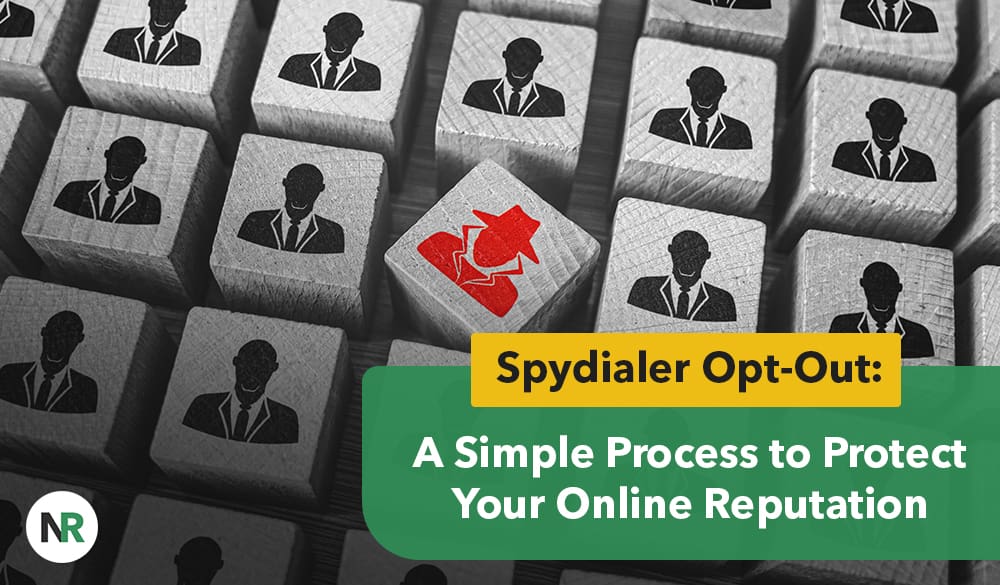In a world where our lives are mostly online, protecting your privacy is crucial. Services like SpyDialer gather personal information, making it essential to take action to keep your data secure. Understanding how to opt out of such services is the first step in maintaining control over your information. By navigating the opt-out process, you can reduce the risk of data misuse and strengthen your online security. Taking these steps helps ensure your personal details remain private and secure.
What is SpyDialer?
SpyDialer is an online tool that allows users to look up phone numbers by gathering information from public records and various databases. While it makes personal details easily accessible, it also raises serious privacy concerns.
Since personal profiles can be easily created from this data, it’s important to understand how SpyDialer works to protect your online privacy.
Why Would Someone Want to Opt-Out of SpyDialer?
Opting out of SpyDialer is an important step for individuals concerned about their privacy and personal information being exposed. With the increasing risks of identity theft and data breaches, many people choose to opt out to better protect themselves and comply with privacy laws like the California Consumer Privacy Act.
Individuals can reduce the risk of unauthorized access to their sensitive data by taking action. Here are some reasons why opting out is beneficial:
- Mitigating Risks: Reduces the chances of personal data being harvested and misused by data brokers.
- Enhancing Data Privacy: Helps keep sensitive information confidential.
- Regaining Control: Allows users to manage what information is shared and who can access it.
Ultimately, opting out is a proactive way to improve online security and control one’s digital footprint.
How Does SpyDialer Collect Information?
- Public records, including court documents and property records, serve as foundational elements for data collection.
- Social media platforms contribute a wealth of information, revealing personal interests, affiliations, and connections.
- Data aggregation practices enable the consolidation of this information, leading to more comprehensive profiles in SpyDialer’s database.
What Type of Information Does SpyDialer Have?
- Social Media Profiles: Understanding an individual’s online presence can help determine their character or track their online interactions.
- Criminal Records: These records can offer insight into an individual’s past, which may influence hiring or partnership decisions.
- Property Records: Knowing what properties someone owns or is linked to can serve various purposes in real estate or financial dealings.
How to Opt-Out of SpyDialer
Step 1: Visit the SpyDialer Website
To begin opting out of SpyDialer, visit the official website and navigate to the ‘Opt-Out’ or ‘Privacy Settings’ link at the footer. Ensure you’re on the authentic site to avoid phishing scams and follow the instructions provided to start the online opt-out process.
Step 2: Enter Your Information
Enter your personal details, such as full name, address, email, and phone number, to initiate the removal of your data from SpyDialer’s records. Accurate information is crucial for a successful opt-out and ensuring your data is properly removed.
Step 3: Verify Your Identity
To protect your privacy, verify your identity through methods like email confirmation, two-factor authentication, or security questions. This step helps ensure that only authorized individuals can remove their personal information.
Step 4: Submit Your Opt-Out Request
After verifying your identity, submit your opt-out request. You’ll receive a confirmation page and email, often with a reference number for tracking.
The process can take several days to weeks, so monitor your accounts and follow up if needed. Once processed, expect a decrease in unsolicited communications. Consider using identity protection services for added security.
Get started with your free reputation evaluation today
How Long Does it Take to Opt-Out of SpyDialer?
The time to opt out varies, typically ranging from a few days to a couple of weeks. Factors affecting the timeline include:
- Peak Request Periods: High request volumes can delay processing.
- System Updates: System changes may temporarily slow down the process.
- Request Volume: More requests can lead to longer wait times.
What Happens After You Opt-Out of SpyDialer?
Once you’ve opted out, your information will be removed from SpyDialer, boosting your privacy and reducing online exposure. However, it’s important to understand how this will impact your online presence and take additional steps to maintain your privacy.
Will Your Information Be Completely Removed?
Opting out of SpyDialer helps reduce your information’s availability on their platform, but complete removal isn’t always guaranteed due to data retention policies and other factors.
Even after taking steps to remove your data, it could still be stored in other databases, shared with third parties, or accessed through data aggregation services.
This highlights the ongoing challenge of data privacy in the digital world. It’s important to understand that:
- Data retention policies vary across companies.
- Information shared online can increase identity theft risks.
- Opting out of one platform doesn’t mean your data is fully erased.
Being proactive and staying informed about managing your personal data is essential to maintaining privacy.
Are There Any Alternatives to Opting Out of SpyDialer?
In addition to opting out of SpyDialer, individuals can use privacy tools and monitoring services to prevent data misuse. Consider using reliable services to monitor your digital presence and alert you to any misuse.
Regular monitoring, using tools like VPNs, and managing your social media presence can further protect your privacy. By staying proactive, you can better safeguard your personal information and maintain a positive online reputation.
Conclusion
Understanding how SpyDialer works and why opting out is important is essential for protecting your online privacy. The platform collects publicly available data, which exposes users to privacy risks and data misuse.
To safeguard personal data, take proactive steps like reviewing privacy settings on social media, checking for unauthorized information online, and using data removal services. These actions improve security, reduce the risk of identity theft, and give you control over your personal information.
Awareness of privacy laws, such as the California Consumer Privacy Act, can also empower individuals to protect their data better.
